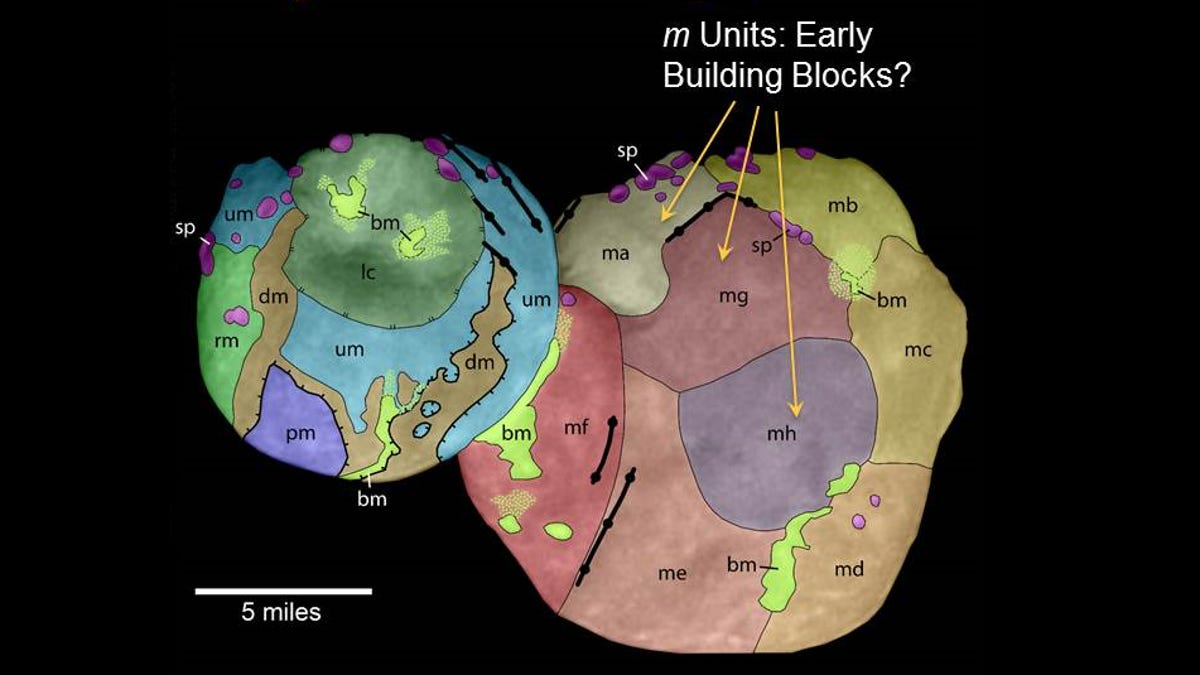NASA reveals secrets of Ultima Thule, the prehistoric space pancake
The farthest space rock ever explored is like nothing we've seen before.

The most distant world we've ever explored, Ultima Thule, keeps getting weirder -- but NASA scientists are beginning to unravel its mysteries.
NASA's New Horizons spacecraft zipped past the distant, ancient space rock on Jan. 1 -- some 4 billion miles from the Earth -- after a 13-year journey to the edge of the solar system. New Horizons' original mission was to study Pluto, but after an extension, the team at NASA and Johns Hopkins University Applied Physics Laboratory sent it to explore an object much farther from home: a small two-bodied space rock, discovered just five years ago, officially named 2014 MU69.
Ultima Thule's unusual bi-lobed shape.
On March 18, NASA held the first press briefing since the Jan. 1 flyby and a number of researchers were on hand to describe 2014 MU69's geology, origin, surface features and unusual pancake shape.
New Horizons was able to image the alien world extensively on its super-brief flyby and begin sending data back to Earth. Because the spacecraft is around 4.1 billion miles (approx. 6.6 billion kilometers) away, all of its important science data is only trickling back to Earth, but there's already plenty to work with.
"The data that we already have on the ground is just mouth-watering," said Alan Stern, principal investigator, at the press briefing, "and it's really changing our ideas, considerably, about how small bodies of the Kuiper Belt, the building blocks of planets like Pluto, were formed."
Nicknamed "Ultima Thule", a Latin phrase referencing a distant world, the unusual bi-lobed rock is composed of a flat, pancake-like lobe nicknamed "Ultima" and a small, round rock nicknamed "Thule". The research team suspects these two bodies were not always interlocked, however, and after an orbital slow-dance, they eventually came together to form a tiny, new whole.
The slow merger of two bodies results in the Ultima Thule we see today.
"What Ultima Thule is teaching us is that the formation of a binary that first forms as a co-orbiting pair and then merges, fits in with one major class of how our entire solar system formed," said William McKinnon, a co-investigator at Washington University.
And Ultima Thule is a real, ancient relic of our solar system which provides scientists with a better picture of how planets and small planetary bodies (known as "planetesimals") begin to form.
But how Ultima Thule came to be isn't the only thing intriguing to the research team.
Although most of the images of Ultima Thule are black-and-white, the planet is technically "ultra red". According to Carly Howlett, a member of the New Horizons science team, it's the first time that an "ultra red" object has been explored, prompting even more questions. "The color imaging even reveals subtle differences in coloration across the surface, and we really want to know why," she said in a press release.
The entire press briefing is available online and features presentations from a number of New Horizons team members.
Researchers will continue to mine the data that New Horizons is sending back -- and they expect to keep receiving the treasure trove of alien information until at least summer 2020. The spacecraft itself isn't necessarily done either, with the idea that it receives another mission extension and images an even more distant world a distinct possibility.

